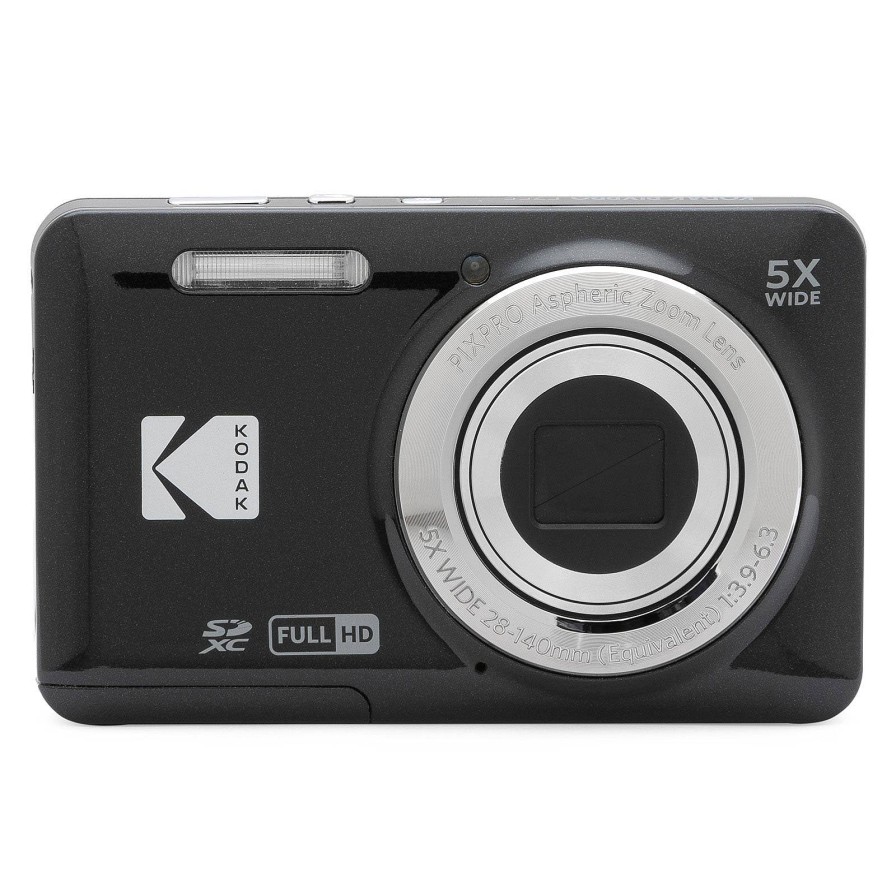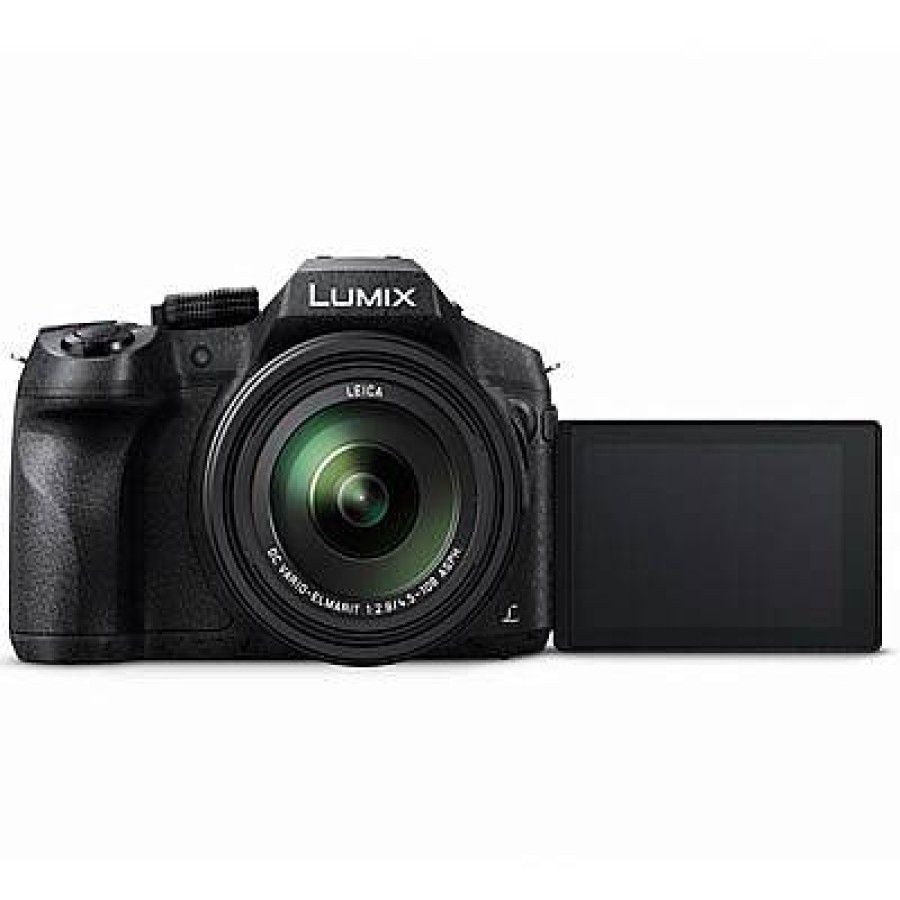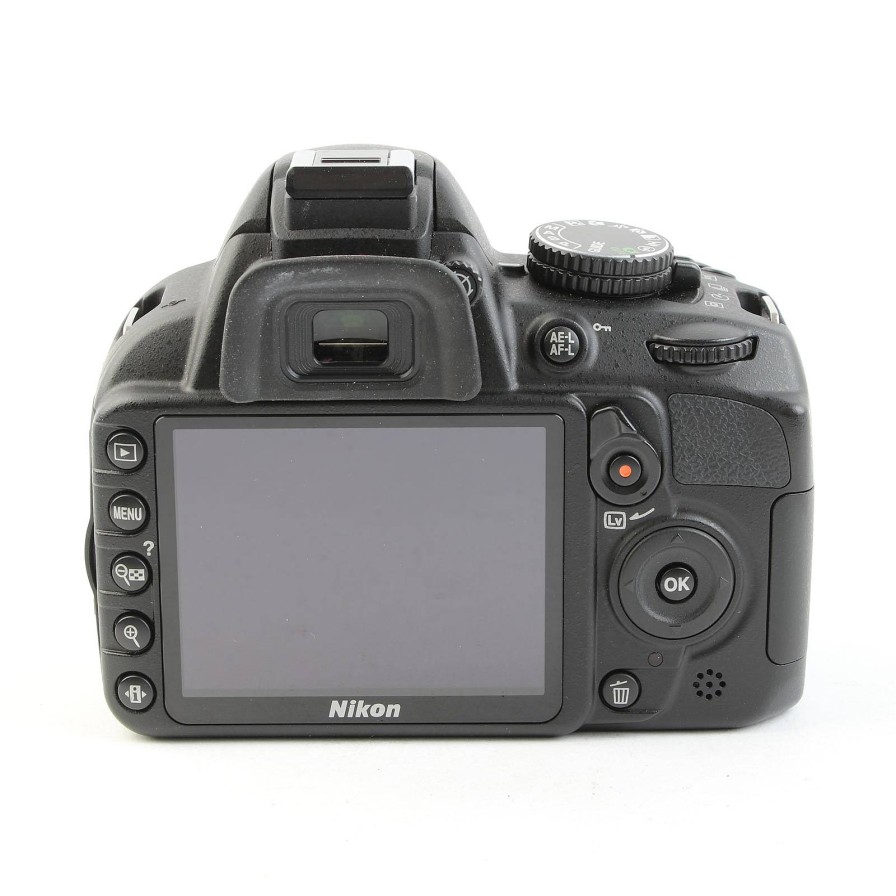Nikon Used Nikon D800E Digital Slr Camera Body | Used Cameras
£466.00 £77.08
Nikon Used Nikon D800E Digital Slr Camera Body | Used Cameras

The Launch Of The Nikon D800 Digital Slr Camera Body Includes The Special Edition D800E, Designed For Photographers Who Require The Sharpest Images Possible, Which Is Achieved By Removing Anti-Aliasing Properties From The Optical Filter. Apart From The Modified Filter, The D800E Boasts The Same Astonishing Specifications As The D800 – 36.3 Megapixels In A Full-Frame (Fx) Format, And Many Of The Crowd-Pleasing Features Of The Recently Launched Flagship D4 Digital Slr Camera. Like The D800, The Nikon D800E Also Features The Same Newly Developed Cmos Sensor With An Area Of 35.9 X 24Mm, A Standard Iso Range Of 100-6400 (Expandable To A Range Of 50-25600), The Nikon 51-Point Advanced Af System, Continuous Shooting Up To 4Fps (Or Up To 6Fps When Using Dx Crop Mode), As Well As The Exciting Addition Of Full 1080P Hd Movie Recording, Including Many Of The Revolutionary New Video Features Found In The D4 Such As A Clean Hdmi Output.
The Key Features
- The D800E Is A Special Edition Of The D800, Specifically Designed For Those Seeking Absolute Definition. Modified To Deliver Unprecedented Sharpness, Its 36.3 Megapixel Fx-Format Sensor Features An Optical Low Pass Filter With Anti-Aliasing Properties Removed. The Ideal Tool For Photographers Who Demand Attention To Detail
- 36.3 Megapixel Fx-Format (Full-Frame) Cmos Sensor
- Iso 100-6400 Extendable Up To 25,600
- 4 Fps Consecutive Shooting In Fx
- 5 Fps In 1.2X/Dx Crop Mode
- Multi-Area D-Movie Records Fx- And Dx-Format Full Hd (1080P) Movies In 30P, 25P And 24P
- Multi-Cam3500Fx 51-Point Af System
- Expeed 3 Image Processing Engine
- 8 Cm (3.2-In.), 921K-Dot Lcd Monitor
- 3D Color Matrix Metering Iii
- 100% Viewfinder Coverage
- Quiet Shooting Mode: Perfect For Discreet Photography, The Sound Of The Camera’S Mirror Return Mechanism Is Noticeably Reduced
- Storage Media – High-Speed Cf And Sd Dual Card Slots
- Built-In I-Ttl Speedlight
- Durable Magnesium Alloy Body – Moisture And Dust Resistant
- Wireless Lan And Ethernet Support Via Optional Wireless Transmitter Wt-4
The Nikon D800E: I Am The Big Picture Video
Nikon Fx-Format Cmos Sensor With 36.3 Effective Megapixels
The D800/D800E Render Levels Of Texture, Nuance And Detail To Your Photography That, Until Now, Have Been The Exclusive Domain Of The Complicated Medium-Format System. Define Every Eyelash, Every Line In Tree Bark, And Every Shimmer Of Light. Savor The Exceptional Depth In Your Still Images — With The Combination Of An Astounding 36.3 Effective Megapixels, The World’S Highest*, And The Outstanding Performance Of Nikkor Lenses, You Can. Enlarge Them As Big As A1 Poster-Sized Prints (59.4 X 84.1 Cm/23.4 X 33.1 In.) At 200 Dpi, Or Crop Aggressively To Reach The Composition You Desire, All Without Sacrificing The Detail And Tonal Range Of The Original. In Order To Maintain Clean, High-Resolution Images, 14-Bit A/D Conversion Within The Sensor And A High Signal-To-Noise Ratio Deliver Phenomenal Images In A Diverse Array Of Situations. The Image Sensor’S Incredible Potential Does Not Stop With Photography, Either. For Cinematographers Ready To Put Their Exceptionally Sharp Nikkor Lenses Into Action, The D800/D800E’S 36.3 Effective Megapixel Data Is Efficiently Processed For Exquisite 1080P Broadcast Quality Video At 30P.
*As Of February 7, 2012, Among Interchangeable Lens Digital Slr Cameras Employing An Image Sensor Of 35Mm Film Size.
Standard Iso 100 To Iso 6400, Range Expandable To Iso 50 To 25600 Equivalent
High-Resolution, Studio-Quality Images Shouldn’T Be Restricted To The Studio. The D800/D800E Set A New Benchmark For High-Resolution D-Slr Cameras, With Crisp Clean Images Across A Wide Iso Range. Flexibility Like This Opens Up New Imaging Opportunities For Both Still Photographers And Cinematographers Alike During The “Magic Hour”, The Time Just Before Dawn Or At Dusk When Available Light Is Often Beautiful But Scarce. Even At High Iso Settings, The Camera’S Intelligent Noise Reduction Systems Manage Noise Without Sacrificing Fine Details, Giving The D800/D800E The Edge. The Difference Can Even Be Seen In Low-Contrast Subjects Such As Hair And Grass Textures, Which Are Often Essential Elements Of Cinema As Well As High-Resolution Portraits And Landscape Images. High Image Quality At Higher Isos Also Means That You Can Shoot Still Images Handheld More Confidently, Knowing That Fast Shutter Speeds Will Reduce Blur.
A Strategic Approach To Turn Light To Your Advantage
Combining Both High-Resolution Performance And A Wide Iso Sensitivity Range Has Finally Become A Reality. Nikon Engineers Have Developed Intelligent New Methods To Manipulate Light Transmission To The Sensor’S Photodiodes: From The Optical Low-Pass Filter And On-Chip Gapless Micro Lenses To The Image Sensor’S Internal Design, Every Measure Has Been Taken To Maximize And Improve Light Transmission In Order To Deliver Crisp, Brilliant Images With Significantly Less Noise. All This Is Possible Under A Wide Variety Of Lighting Conditions, Enabling You To Get The Most Out Of Your Nikkor Lenses.
The Ultimate Attention To Detail – The D800E
D800E Nikon Engineers Have Developed A Unique Alternative For Those Seeking The Ultimate In Definition. The D800E Incorporates An Optical Filter With All The Anti-Aliasing Properties Removed In Order To Facilitate The Sharpest Images Possible. This Is An Ideal Tool For Photographers Who Can Control Light, Distance And Their Subjects To The Degree Where They Can Mitigate The Occurrence Of Moiré. Aside From The Optical Filter, All Functions And Features Are The Same As On The D800.
Note: The D800E Carries An Increased Possibility That Moiré And False Color Will Appear, Compared To The D800. Ir Cut And Antireflective Coating Properties Of The Optical Filter Remain The Same With Both Versions.
Nikon Integrated Dust Reduction System That Includes An Image Sensor Cleaning Function
Any Dust That Reaches The Image Sensor Results In Unattractive Spots On Your Images. To Prevent This, The D800/D800E Employ Nikon’S Integrated Dust Reduction System, Which Includes A Self-Cleaning Sensor Unit With Four Different Resonance Frequencies To Vibrate The Optical Low-Pass Filter And Shake Dust Away From The Sensor. This Function Can Be Set To Operate Automatically When The Camera Is Turned On Or Off, Or To Manual.
Expeed 3 Image-Processing Engine: Speed, Versatility, And High Performance
High-Megapixel Still Images Are Detail-Rich But Data-Heavy. With The D800/D800E, However, You Don’T Have To Sacrifice Speed For This Privilege. Dedicated To Understanding Speed And Its Role In Image Making, Nikon Engineers Designed A Powerful Expeed 3 Image-Processing Engine Exclusively For Digital Slrs. From Image Processing And Card Recording To Image Playback And Image Transfer, Expeed 3 Manages Massive Amounts Of Data At Faster Speeds Than Expeed 2. Even With Specialized Processing Features Like Active D-Lighting And High Iso Noise Reduction, Capture Speed Is Not Affected. Expeed 3 Is So Powerful That It Handles Data-Intensive Tasks Such As Full Hd Video Recording At 30P With Ease. You’Ll Also Notice The Difference In Your Still Images And Videos Through Minimized Noise And Even Richer Colors And Tones. In Addition To These Fundamental Advantages, The D800/D800E Reduce The Kind Of Color Phase Shift That Some Cameras Have Difficulty With In Similar Situations.
14-Bit A/D Conversion And 16-Bit Image Processing For Rich Tones And Natural Colours
Tonal Gradation Is Where An Image Transforms From Simply Representing Life To Taking On A Life Of Its Own. The D800/D800E Do Exactly That, With Cutting-Edge Image Processing That Injects Vital Energy Into Your Images. Black Is Rendered As Pitch Black, And Shadow Details Are Subtle And Rich. Even Under Harsh, High-Contrast Light, Where Some Cameras Can Fail, The D800/D800E’S Gradation Remains Smooth With Abundant Detail And Tone All The Way Up The Scale To Pure White.
Lateral Chromatic Aberration Reduction: Take Full Advantage Of Your Nikkor Lens Collection
High-Megapixel Sensors Can Really Test The Quality Of Your Lenses, But You Can Be Confident That The Combination Of Brilliant Nikkor Lenses And Nikon’S Intelligent Processing Measures Will Significantly Reduce Lateral Chromatic Aberration To Give You Incredibly Natural-Looking Results. Unlike Other Correction Methods That Simply Eliminate Chromatic Aberration, Nikon’S Method Compensates For These Color Differences In A Resolving Index For Each Color, Making It Particularly Effective In Producing Images With Stunning Edge-To-Edge Sharpness. Moreover, Because These Corrections Are Made Regardless Of The Nikkor Lens Used, This Feature Contributes Substantially To Achieving The Sharpest Images Possible.
Advanced Scene Recognition System With 91K-Pixel Rgb Sensor
Nikon’S Revolutionary Advanced Scene Recognition System, Introduced With The Flagship D4 Camera, Is Also Employed In The D800/D800E. At Its Core Is A 91K-Pixel Rgb Sensor That Meticulously Analyzes Each Scene With The Fine Resolution. The Rgb Sensor Can Recognize Your Scene’S Colors And Brightness With Unprecedented Precision, Then Use That Information To Implement Various Automatic Controls And Give You More Natural-Looking Results. The Real Breakthrough, However, Is That The Sensor Can Detect Human Faces With Startling Accuracy When Shooting Through The Optical Viewfinder. Along With Face Detection, Detailed Scene Analysis Is Utilized To Support More Accurate Autofocus, Auto Exposure And I-Ttl Flash Exposure Results In A Diverse Range Of Compositional And Lighting Situations. The Improved Subject Tracking Is Most Noticeable When Using 3D-Tracking, Which Can Maintain A Focus On Moving Subjects Smaller In Size Than With Previous Generations.
More Accurate Face Detection In Auto-Area Af And Subject Tracking In 3D-Tracking
Auto-Area Af And 3D-Tracking Are Af-Area Modes Unique To Nikon That Use Your Subject’S Color And Brightness Information To Detect Focus. With The D800/D800E And Their More Precise Information And Subject Recognition Advancements, Expect Big Steps Forward For Both Af-Area Modes When Taking High-Quality Still Images. In Auto-Area Af, The Camera Can Genuinely Detect Human Faces And Focuses On Them Immediately — Useful When Faces Are A Priority And There’S No Time To Choose Focus Points. When Using 3D-Tracking, The Sensor’S Fine Resolution Combines With A Specifically Optimized Af Algorithm To Realize Unprecedented Subject Tracking Precision, Recognizing Detailed Patterns To Keep Your Subject In Sharp Focus.
3D Color Matrix Metering Iii For More Accurate Exposures
3D Color Matrix Metering Iii Professional Photographers Who Shoot Still Images Know That Nikon’S Metering System Delivers Supremely Well-Balanced Exposures. Thanks To The 91K-Pixel Rgb Sensor, The D800/D800E Have Far More Detailed Scene Information At Its Disposal — Including Detected Face Information. This Data Helps The 3D Color Matrix Metering Iii Deliver More Desirable Auto Exposures, Especially When There Are Human Faces Present. When The D800/D800E Detect A Human Face In A Backlit Situation, The Camera Determines The Overall Exposure While Prioritizing The Facial Exposure, Which Might Otherwise Be Underexposed. When A Face Is Lit From The Front And Appears Much Brighter Than The Background, The Camera Recognizes The Situation And Avoids Blowing Out The Facial Details.
More Balanced Results In I-Ttl Balanced Fill-Flash And Active D-Lighting
I-Ttl Balanced Fill-Flash Nikon’S I-Ttl System Has Long Been Considered The Most Accurate Flash Control System In Photography, But Now Face Detection And Highlight Analysis By The 91K-Pixel Rgb Sensor Pushes Performance Even Further. With The D800/D800E’S Enhanced I-Ttl Balanced Fill-Flash, You Can More Precisely Illuminate People’S Faces In Relation To Their Surrounding Brightness Using Either The Built-In Flash Or An External Hot-Shoed Nikon Speedlight. For Weddings And Fashion Shoots, Or Any Photography That Relies On The Highest-Quality Still Images, This New Standard Redefines What A Flash System Should Be. Face Detection Also Makes A Difference When Active D-Lighting Is Used To Retain Highlights And Shadows In High-Contrast Lighting Situations. Faces Will Be Optimally Exposed Both In The Sun And In The Shade.
Light Source Identification For Auto White Balance In Still Images
The D800/D800E’S Auto White Balance Is Incredibly Accurate In A Diverse Range Of Shooting Situations, Aided By Unique Nikon Technology That Effectively Identifies Your Light Sources, Both Natural And Artificial. With The 91K-Pixel Rgb Sensor And The Image Sensor Working Together, The Camera Renders White As White With Supreme Accuracy. Or If You Prefer, The Auto White Balance Can Be Set To Reflect The Warmth Of Ambient, Incandescent Lighting.
Contribution To D-Movie Shooting
The D800/D800E’S Advanced Scene Recognition System Enhances Not Only Still Image Shooting But Also Various Controls Used In Movie Shooting. It Identifies Light Sources And Human Faces Finely, Utilizing The High Resolution Of The Image Sensor To Deliver Accurate Auto White Balance And Exposure Control During Movie Shooting, And Improves The Precision Of Subject-Tracking Af. Furthermore, It Automatically Detects Flicker Effects, And Controls The Exposure To Reduce Them.
Direct Access To Picture Control That Enables Quick Setting
Customize The Look Of Your Stills And Videos Through Picture Controls By Fine-Tuning Parameters Such As Sharpening, Saturation, And Hue. The D800/D800E Now Allow You To Access Picture Control Instantly And Directly From A Dedicated Button Rather Than Entering The Menu. When Live View Shooting, You Can Visually Confirm How Customized Picture Control Settings Will Look And Easily Adjust The Parameters.





















Reviews
There are no reviews yet.